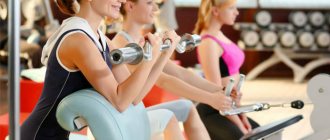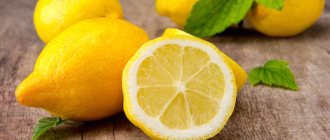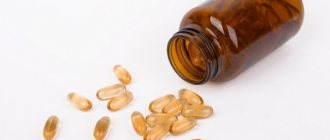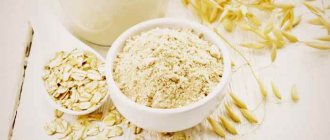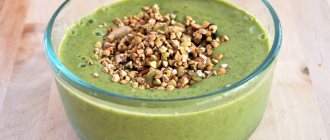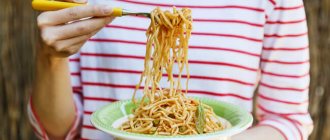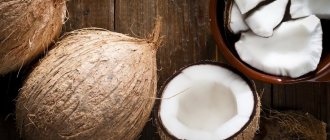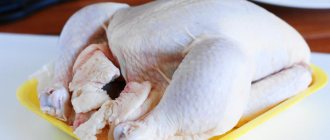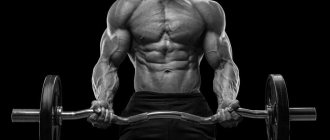The main source of complex (slow) carbohydrates for bodybuilding athletes is porridge. The most valuable are rice and buckwheat, which contain protein, fats, carbohydrates and minerals. Long-term consumption of cereals made from these cereals on a regular basis ceases to bring pleasure, so some variety needs to be introduced into the diet. To this end, you need to consider which cereals are best to include in your menu.
Porridge in bodybuilding
Various cereals have several advantages over other types of carbohydrates used in bodybuilding:
1. Cereals are a long-lasting carbohydrate that provides our body with energy for a long time.
2. Porridge is a source of vitamins and microelements necessary for building muscle mass.
3. Cereals are a source of good vegetable protein.
4. Porridge is a low-calorie product, which allows you to use cereals both on a diet and while gaining muscle mass.
5. Various cereals are the cheapest sources of carbohydrates.
Why is porridge better than other carbohydrates? It's all about the low GI of most cereals. Undoubtedly, the glycemic index of most unsweetened vegetables is lower than that of cereals, but gaining the necessary calories from tomatoes, cucumbers and various greens is extremely difficult and extremely expensive. But the advantage of cereals lies not only in low GI.
Content
- 1 Bread, cereals, rice and pasta
- 2 Cereal side dishes 2.1 Rice with squid
- 2.2 Boiled wild rice
- 2.3 Rice stewed with pepper
- 2.4 Risotto with vegetables and beans
- 2.5 Brown rice with olives
- 2.6 Vegetable risotto
- 2.7 Rice “Exotic”
- 2.8 Variegated rice
- 2.9 Rice with mushrooms and vegetables
- 2.10 Mexican rice
- 2.11 Buckwheat porridge with onions and carrots
- 2.12 Buckwheat porridge “Festive”
- 2.13 Pearl barley porridge with zucchini
- 2.14 Buckwheat porridge with mushrooms and onions
- 2.15 Oatmeal porridge with berries
- 3.1 Pasta
The main advantage of cereals
Porridge is not only healthy, but also cheap. In times of crisis, when a bodybuilder’s diet is becoming more expensive by leaps and bounds, increasing the amount of cereals in the diet, which cost pennies relative to other products, can not only improve strength performance by receiving an excess of vegetable protein and good carbohydrates, but also significantly save on your diet, which will indirectly also improve your athletic performance. More details about why the use of porridge in bodybuilding is justified can be found here.
Pasta side dishes[edit | edit code]
Pasta[edit | edit code]
The persistent stereotype about the “empty calorie content” of pasta has recently been noticeably shaken. To the usual set of “rice/buckwheat/oatmeal” you can safely add “spaghetti/cannelloni/fettuccine” without fear of consequences in the form of excess subcutaneous fat. However, the “expulsion” of pasta from a bodybuilder’s diet happened not so long ago, and many sports nutrition specialists considered it their duty to return pasta to its good name. Thus, L. Ostapenko, in his “rehabilitating” article “Pasta is a bodybuilder’s friend,” gives a fairly impressive list of the strongest athletes in the world (Lee Labrada, Lee Haney, Sean Ray, Dorian Yates, etc.), whose off-season menu includes hefty portions of pasta.
When choosing pasta, first of all you should pay attention to the varieties of wheat from which they are made. Durum pasta is, of course, preferable. The technology of grain grinding makes it possible to preserve the crystalline form of starches, and therefore the glycemic index of “hard” pasta is significantly reduced compared to “soft” pasta.
The glycemic index is also affected by the duration of heat treatment: for overcooked pasta, it can jump by one and a half times. So, in Italy, pasta is undercooked, and it is this simple chef’s trick that allows Italians to consume pasta in unlimited quantities.
100 g of pasta contains about 70 g of carbohydrates, 10 g of protein and slightly above 1 g of fat; energy value is about 100 kcal per 100 finished pasta.
Preparation[edit | edit code]
Pasta is cooked in two ways: drained, that is, in a large amount of water, and not drained. When cooking by drain, there should be six times more water than pasta. Bring the water to a boil, add salt if desired (10 g of salt per 1 liter of water) and dip the pasta into it. Cook at low simmer without a lid, stirring. Cooking times depend on the composition and size of the pasta, the degree of drying and... personal preferences. The readiness of pasta is determined practically by tasting it. Pasta that has a core is preferable. Boiled pasta is less tasty, and there are not so many benefits from it. Pasta for casseroles is cooked using the non-draining method. In this case, water or a mixture of water and milk is taken in a ratio of 2:1. Cook the pasta so that the liquid is completely absorbed into the product.
Gypsy-style pasta[edit | edit code]
Gypsy style pasta
- feather pasta 400 g
- hard cheese 40 g
For the sauce
:
- tomatoes 6 pcs.
- pitted olives 6 pcs.
- hot red pepper 1 pc.
- garlic 1 clove
- vegetable oil 3 tbsp. spoons
- ground oregano or marjoram 1 pinch
Scald the tomatoes and, after removing the skin and seeds, chop finely.
Finely chop the olives.
For the sauce, fry the garlic in oil along with finely chopped pepper, add tomatoes, olives, oregano, salt and simmer until thickened.
Boil the pasta in plenty of salted water and drain in a colander.
When serving, place the pasta on a plate, pour over the sauce and sprinkle with grated cheese.
Number of servings
: 4
Calorie content
: 355-450
Cooking time
: 30 minutes
Pasta with spicy seasoning[edit | edit code]
Pasta with spicy seasoning
- pasta 400 g
- basil 2 bunches
- parsley and spinach 1 bunch each
- garlic 1 head
- vegetable oil 1/2 cup
- walnuts 1/2 cup
- pine nuts 1/2 cup
- hard cheese 50 g
Boil pasta in salted water, drain in a colander. Fry walnuts in 2 tablespoons of oil, chop finely. Chop the garlic, add the remaining oil, finely chopped herbs and beat. Add cheese, pine nuts, salt and stir.
When serving, combine the pasta with the nut mixture, place on a plate and garnish with herbs.
Number of servings
: 4
Calorie content
: 355-450
Cooking time
: 30 minutes
Tuna pasta[edit | edit code]
Pasta with tuna
- pasta 300 g
- grated hard cheese 2 tbsp. spoons
For the sauce
:
- canned tuna in oil 350 g
- tomato puree 2 tbsp. spoons
- olive oil 2 tbsp. spoons
Boil the pasta in salted water, drain in a colander.
For the sauce, sauté the tomato in oil, add the fish and stir.
Combine pasta with sauce, cheese and heat through.
When serving, place pasta with sauce on a plate and garnish with herbs.
Number of servings
: 4
Calorie content
: 355-450
Cooking time
: 30 minutes
Pasta with shrimp[edit | edit code]
- pasta 500 g
- shrimp 200 g
- tomatoes 2 pcs.
- garlic 2 cloves
- pitted olives 50 g
- cream 100 g
- olive oil 2 tbsp. spoons
- hard cheese 50 g
- ground black pepper
Boil the pasta until half cooked. Boil and peel the shrimp.
Scald the tomatoes and, after peeling them, cut them into cubes, finely chop the garlic and olives.
Fry the garlic in oil, add shrimp and fry them. Add chopped tomatoes and olives, simmer a little, pour in cream, salt and pepper. Then combine with pasta and heat for 2-3 minutes.
When serving, sprinkle the pasta with chopped herbs and grated cheese.
Number of servings
: 6
Calorie content
: 350
Cooking time
: 25 minutes
Pasta with vegetables in tomato[edit | edit code]
Pasta with vegetables in tomato
- pasta or spaghetti 400 g
- grated hard cheese 50 g
For the sauce
:
- tomatoes 3 pcs.
- onion 2 heads
- olive oil 3 tbsp. spoons
- vegetable broth 50 g
- hard cheese 300 g
- dry white wine 4 tbsp. spoons
- basil 1 bunch
- ground black pepper
Boil the pasta in salted water, drain in a colander.
For the sauce, scald the tomatoes and, after peeling and seeds, chop finely.
Finely chop the onion and sauté in oil. Add tomatoes, simmer, salt and pepper. Add broth, wine, grated cheese to the mixture and cook, stirring, until thickened. Chop the basil and mix with the resulting sauce. When serving, place the pasta on a dish in the form of a nest, pour the sauce into the middle, sprinkle with cheese, and decorate with basil.
Number of servings
: 6
Calorie content
: 355-450
Cooking time
: 35 minutes
Pasta with shrimp and saffron[edit | edit code]
Pasta with shrimp and saffron
- feather pasta 350 g
- shrimps 12 pcs.
- dry white wine 1/2 cup
- saffron 4-5 stamens
- zucchini 2 pcs.
- celery stalks 2 pcs.
- sweet pepper 2 pcs.
- chili pepper 1 pc.
- garlic 1 clove
- vegetable oil 6 tbsp. spoons
- ground black pepper
Boil the pasta in plenty of salted water and drain in a colander.
Clean the shrimp. Pour 1/2 cup of water over the shells, add wine, saffron, salt and cook for 5 minutes.
Strain the broth.
Cut the zucchini into cubes, garlic and celery stalks into slices. Cut sweet and hot peppers into strips. Fry vegetables in oil for 3 minutes, add shrimp, fry for another 1 minute. Pour in the broth from the shells, add salt and pepper and bring to a boil. Add pasta and heat for 2 minutes. When serving, sprinkle the pasta with chopped herbs.
Number of servings
: 6
Calorie content
:355-450
Cooking time
: 25 minutes
Pasta with beans[edit | edit code]
Pasta with beans
- pasta 300 g
- canned beans 1 cup
- onion 2 heads
- butter 2 tbsp. spoons
- tomato puree 2 tbsp. spoons
Boil pasta in salted water, drain in a colander.
Chop the onion, sauté in oil for 3-5 minutes, then add tomato puree, beans and heat for 5-7 minutes. Mix the vegetable mixture with pasta and heat for 3-5 minutes. When serving, sprinkle the dish with chopped herbs.
Number of servings
: 4
Calorie content
:350
Cooking time
: 30 minutes
Pasta with lentils[edit | edit code]
Lentil pasta
- spiral pasta 400 g
- red lentils 200 g
- spinach 200 g
- tomatoes 2 pcs.
- onion 1 head
- garlic 1 clove
- vegetable oil 2 tbsp. spoons
- hard cheese 2 tbsp. spoons
- ground black pepper
Boil the pasta in salted water and drain in a colander.
Cook the lentils for 2 minutes, then remove from the heat and soak for 1 hour, covered, drain the water.
Finely chop the onion and garlic, cut the spinach into strips. Scald the tomatoes and, after peeling and removing seeds, cut into cubes. Fry the vegetables in oil for 5 minutes, add the lentils, fry for another 10 minutes, add salt and pepper.
Mix pasta with vegetables and lentils and heat through.
When serving, sprinkle with grated cheese and chopped herbs.
Number of servings
: 6
Calorie content
: 455-550
Cooking time
: 25 minutes + soaking
Meat casserole with spaghetti[edit | edit code]
Meat casserole with spaghetti
- beef pulp (thick edge) 200 g
- spaghetti 220 g
- eggplant 1/2 pcs.
- champignons 100 g
- onion 1 head
- garlic 2 cloves
- tomatoes 4 pcs.
- olive oil 2 tbsp. spoons
- hard cheese 4 tbsp. spoons
- sugar 1 tbsp. spoon
- ground black pepper
Cut the meat into pieces and fry in a non-stick pan. Cut the eggplant into slices, add salt and leave for 15 minutes, then rinse and dry. Cut the champignons into slices, the onion into half rings, and chop the garlic. Scald the tomatoes and, after peeling them, grind them in a blender. Fry the eggplant for 5-7 minutes in oil, add the onion and champignons, fry for another 5 minutes. Add meat, tomato puree, salt, sugar, ground pepper and vinegar, simmer for 15 minutes.
Boil the spaghetti in salted water, place in a greased dish, place the meat mixture on top, sprinkle with grated cheese and bake for 20-30 minutes at 220°C.
When serving, cut the casserole into portions and place on a plate. Decorate with greenery.
Number of servings
: 2
Calorie content
: 455-550
Cooking time
: 50 minutes
Chicken fillet with “bows”[edit | edit code]
Chicken fillet with “bows”
- chicken fillet 350 g
- “bows” 200 g
- broccoli 150 g
- onion 1 head
- olive oil 4 tbsp. spoons
- lemon juice 1 tbsp. spoon
- grated hard cheese 2 tbsp. spoons
- dried oregano 1/2 teaspoon
- ground black pepper
Separate broccoli into florets. Boil the “bows” in salted water for 5 minutes, add the broccoli and cook for another 5 minutes, drain in a colander, and season with some olive oil.
Simmer the chicken fillet in a small amount of salted water with lemon juice, then dry and cut into pieces.
Chop the onion and sauté in olive oil.
Combine boiled “bows” with broccoli with fillet, fried onions, oregano, salt and pepper, stir and heat.
When serving, place on a platter and sprinkle with cheese.
Number of servings
: 2
Calorie content
: 355-450
Cooking time
: 40 minutes
What to avoid
The best cereals have a positive effect on the body, but some cereals should be treated with extreme caution. Despite their popularity, they can slow down the process of mass gain
However, it is not at all necessary to exclude them from the diet altogether; it is enough to reduce their consumption to a minimum.
Corn porridge is suitable only as an alternative when it is necessary to diversify the diet. This is not the best choice for an athlete because it is very high in calories and contains a lot of starch. However, corn works as a brush for the intestines, so it is indispensable when problems with the gastrointestinal tract arise, which is often observed when consuming sports nutrition or illiterate menu planning.
Be especially careful with rice. It is healthy and contains absolutely no fat.
During the period of active weight gain, the lack of fatty acids reduces the production of anabolic hormones (including sex hormones), which can slow down progress.
Limit your consumption of semolina. It is rich in gluten, very high in calories and highly allergenic. Its use is indicated for ectomorphs who have difficulty gaining weight.
Why is barley so useful?
Pearl barley is primarily a carbohydrate-rich dish ( 73.7 g ). It also contains a small amount of healthy fats ( 1.1 g ) and proteins ( 9.3 g ), saturated with amino acids, which play a particularly important role in the formation of new cells, especially when engaging in strength sports.
Fiber, abundantly present in pearl barley, helps cleanse the body and stimulates the digestive system. The bouquet of micro- and macroelements is also impressive: potassium, calcium, iron, zinc, copper, manganese, iodine, phosphorus, bromine. All of them are beneficial for the body as a whole, and in particular for the cardiovascular system.
Rice
A staple food for almost half of the world's population, especially in Asian countries. However, this is not exactly the rice that we are used to eating. After all, our diet usually contains polished white rice. When polished, almost all the beneficial properties of rice contained in its shell are lost. Because the main beneficial substances in any cereal are contained in the shell. In the processed grain, almost only starch remains with a minimal amount of proteins, dietary fiber, minerals, and vitamins. Moreover, starch, which has a fairly high glycemic index, so this rice is not very good for diabetics and overweight people. Brown or wild rice (unpolished, with a shell) is an excellent grain that has almost all the same properties as buckwheat. What else is good about rice? It contains a large amount of potassium, which removes excess fluid from the body. Therefore, rice is useful for people with a tendency to edema, especially those with cardiovascular diseases. In addition, rice protein is very well digestible. Therefore, if a person has problems with the digestive system, then rice will also be a good cereal for him, especially since it is also gluten-free.
Spelled
A very interesting cereal, which we have undeservedly forgotten, but our ancestors actively consumed. It is actually wild wheat and has unique properties. Contains a huge amount of protein, complete in amino acid composition, as is the case with buckwheat. Plus, spelled also has a sufficient amount of dietary fiber, many vitamins and minerals, because it is a whole grain. The only negative is that spelled takes a long time to cook. Therefore, it is recommended to soak the cereal for several hours before cooking. Wheat contains substances - anti-enzymes, in particular phytic acid, which neutralizes digestive enzymes, thereby making it difficult to digest cereals. The same is true for pearl barley and legumes. Soaking allows you to get rid of some of the phytic acid and increase the digestibility of the cereal.
Couscous
This is not a plant, but a cereal made from different grains. It can be made from durum wheat, millet, or rice. Therefore, its nutritional characteristics depend on the raw materials from which it is made. For example, if it is made from durum wheat, it has all the beneficial properties of wheat. It contains protein, which is well absorbed, vitamins and minerals, if the shell was not removed from the grain, but the grain was simply crushed. For us, couscous is an unusual grain, and its price is steep. Therefore, for the sake of exoticism, you can try it. But you probably shouldn’t use it every day. Moreover, it does not have any special unique properties.
Cold water and no lid. 10 mistakes when cooking porridge Read more
Millet
Leader in magnesium. And this is a mineral that is very necessary for the nervous system and muscle function. Characteristic feature: millet porridge contains a lot of healthy polyunsaturated fatty acids, which is why it is poorly stored and goes rancid quite quickly. Leftover millet acquires a bitter taste. Therefore, there is a rule: millet must be washed well to remove bitterness. Store for a short time, in a dark and cool place, so that the fats become less rancid.
Porridge with a twist. 3 recipes for independent dishes from pearl barley and millet Read more
